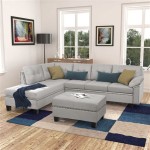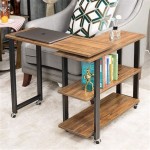Best Fabric For A Couch: A Comprehensive Guide
Selecting the right fabric for a couch is a crucial decision that significantly impacts the furniture's longevity, aesthetics, comfort, and maintenance requirements. The ideal fabric should not only complement the room's décor but must also withstand the rigors of daily use, resisting stains, tears, and fading. Considering the myriad of options available, ranging from natural fibers to synthetic blends, understanding the characteristics of each fabric is paramount to making an informed choice. This article will delve into the various fabric options, outlining their pros, cons and suitability for different lifestyles and needs.
The durability of a couch fabric is a primary concern for most buyers. Fabrics that can withstand heavy use, resist abrasion, and maintain their color and texture over time are highly desirable. Factors such as the fabric’s weave, fiber content, and any protective treatments applied contribute to its overall durability. Additionally, the fabric’s resistance to staining and its ease of cleaning are essential considerations, especially for households with children or pets.
Beyond durability, the aesthetic appeal of the fabric plays a significant role in the overall look and feel of the room. The chosen fabric should harmonize with the existing color palette, furniture styles, and decorative elements. Factors such as the fabric’s texture, pattern, and color can significantly influence the room’s ambiance and create a welcoming and comfortable environment.
Furthermore, comfort is another important factor to consider. The fabric’s texture, breathability, and ability to regulate temperature affect the overall comfort level of the couch. Fabrics that are soft to the touch, allow for air circulation, and prevent excessive heat buildup are preferred for seating areas that are used frequently.
Understanding Natural Fabrics
Natural fabrics are derived from plant or animal sources and offer a range of desirable qualities, including breathability, comfort, and inherent aesthetic appeal. However, they often require more maintenance and may be more susceptible to staining and wear compared to synthetic options.
Cotton: Cotton is a widely used natural fiber known for its softness, breathability, and affordability. It is a versatile fabric that can be dyed in a wide range of colors and patterns. However, cotton is susceptible to staining, fading, and wrinkling, and it may not be the most durable option for high-traffic areas. Stain-resistant finishes can improve its performance, but it is generally best suited for formal living rooms or areas with less frequent use.
Linen: Linen is a natural fiber derived from flax plants, known for its luxurious texture, breathability, and durability. Linen is highly absorbent and dries quickly, making it a comfortable choice for warmer climates. However, linen is prone to wrinkling and may require frequent ironing to maintain a pristine appearance. Like cotton, stain-resistant finishes can improve its resistance to staining and make it a more practical option for everyday use.
Wool: Wool is a natural fiber derived from sheep known for its warmth, durability, and stain resistance. Wool is naturally flame-retardant and resists fading, making it a resilient choice for couches. However, wool can be expensive and may require professional cleaning. Wool is also susceptible to moths, so proper storage and maintenance are necessary to prevent damage. Wool is often blended with synthetic fibers to improve its affordability and ease of care.
Leather: Leather is a durable and luxurious material derived from animal hides. It is known for its resistance to wear and tear, its ability to develop a patina over time, and its inherent elegance. Leather is relatively easy to clean and maintain, but it can be expensive. Leather is also susceptible to scratches and stains, so it is important to choose the right type of leather for the intended use. Full-grain leather is the highest quality, while top-grain leather is more affordable but less durable. Bonded leather is the least expensive option but is also the least durable and authentic.
Exploring Synthetic Fabrics
Synthetic fabrics are manufactured from man-made materials, offering a range of desirable qualities, including durability, stain resistance, and affordability. Synthetic fabrics are often blended with natural fibers to improve their performance and aesthetic appeal.
Polyester: Polyester is a synthetic fiber known for its durability, stain resistance, and affordability. It is resistant to fading, wrinkling, and stretching, making it a practical choice for high-traffic areas. Polyester is often blended with other fibers, such as cotton or wool, to improve its comfort and aesthetic appeal. Microfiber polyester is a particularly soft and plush option that is also resistant to stains and spills.
Acrylic: Acrylic is a synthetic fiber known for its resemblance to wool. It is soft, warm, and resistant to fading and wrinkling. Acrylic is also relatively affordable and easy to care for. However, acrylic is susceptible to pilling and may not be as durable as other synthetic fabrics. Acrylic is often used as a substitute for wool in upholstery and is a good choice for those who want the look and feel of wool at a lower price point.
Olefin: Olefin is a synthetic fiber known for its durability, stain resistance, and resistance to fading. It is also relatively inexpensive and easy to clean. Olefin is often used in outdoor furniture because it is resistant to moisture and mildew. However, olefin is not as soft as other synthetic fabrics and may not be as comfortable for prolonged sitting. Olefin is a good choice for high-traffic areas or for those who want a durable and easy-to-care-for fabric.
Rayon: Rayon is a semi-synthetic fiber derived from cellulose. It is soft, absorbent, and drapes well. However, rayon is not as durable as other synthetic fabrics and is susceptible to wrinkling and staining. Rayon is often blended with other fibers to improve its performance. While rayon has a luxurious feel, it is typically not recommended for high-use couches due to its fragility.
Considering Blended Fabrics
Blended fabrics combine the desirable qualities of two or more different fibers, resulting in a fabric that offers improved performance and aesthetic appeal. Blending natural and synthetic fibers can create a fabric that is both durable and comfortable, while also offering enhanced stain resistance and ease of care.
Cotton-Polyester Blends: This is a common blend that combines the comfort and breathability of cotton with the durability and stain resistance of polyester. The blend offers a balance of affordability, comfort, and practicality, making it a popular choice for family rooms and casual living spaces. The ratio of cotton to polyester can vary, with higher polyester content resulting in greater durability and stain resistance.
Wool-Synthetic Blends: These blends combine the warmth, durability, and stain resistance of wool with the affordability and ease of care of synthetic fibers, such as polyester or nylon. The blend offers a luxurious feel and a sophisticated look, while also being relatively easy to maintain. The synthetic fiber content helps to reduce the cost of the fabric and makes it more resistant to shrinkage and wrinkling.
Linen-Cotton Blends: These blends combine the luxurious texture and breathability of linen with the affordability and ease of care of cotton. The blend offers a relaxed and comfortable feel, while also being relatively resistant to wrinkles and stains. The cotton content helps to reduce the cost of the fabric and makes it easier to clean.
Microfiber Blends: Microfiber fabrics, often made from polyester or nylon, are frequently blended with other materials to enhance their texture or performance. For example, microfiber can be blended with cotton to create a softer, more breathable fabric, or with rayon to improve its drape and feel. The specific properties of the blend will depend on the combination of materials used.
Selecting the perfect fabric for a couch requires careful consideration of various factors. Analyzing everyday use, potential for spills, and aesthetic preferences are essential to ensure satisfaction with the final choice. Researching fabrics and, if possible, testing samples can aid in making the most informed decision.

Better Materials For Sofa Leather Vs Fabric

Best Fabrics For Sofas The Inside

17 Types Of Sofa Materials In Malaysia Best Fabrics For Your Couch Frwd By Cuura Space

How To Choose The Right Sofa Fabric Godrej Interio

How To Choose The Best Fabric For Your Sofa Furniture Basics

Best Fabric For Sofa How To Pick A That Lasts

How To Choose The Best Upholstery Fabric For Sofas

The Best Sofa Upholstery Polyester Vs Linen Cozylant

Best Fabrics For Sofas The Inside

The 7 Best Sofas Of 2025 Reviews By Wirecutter








